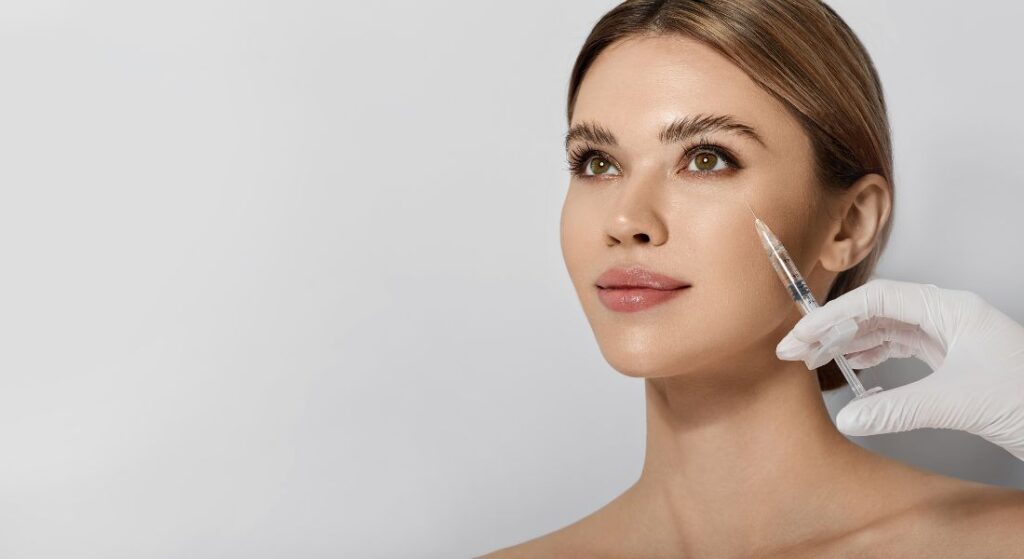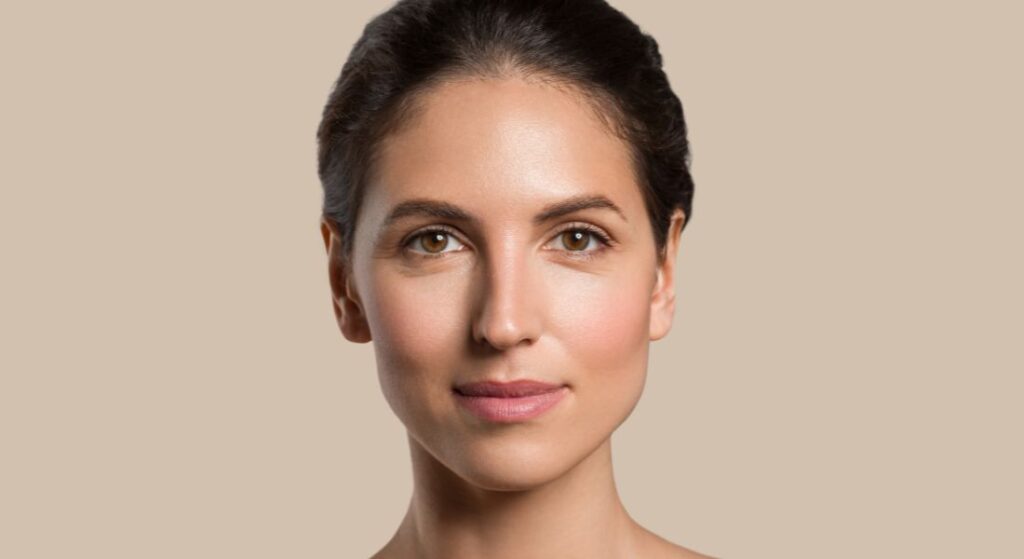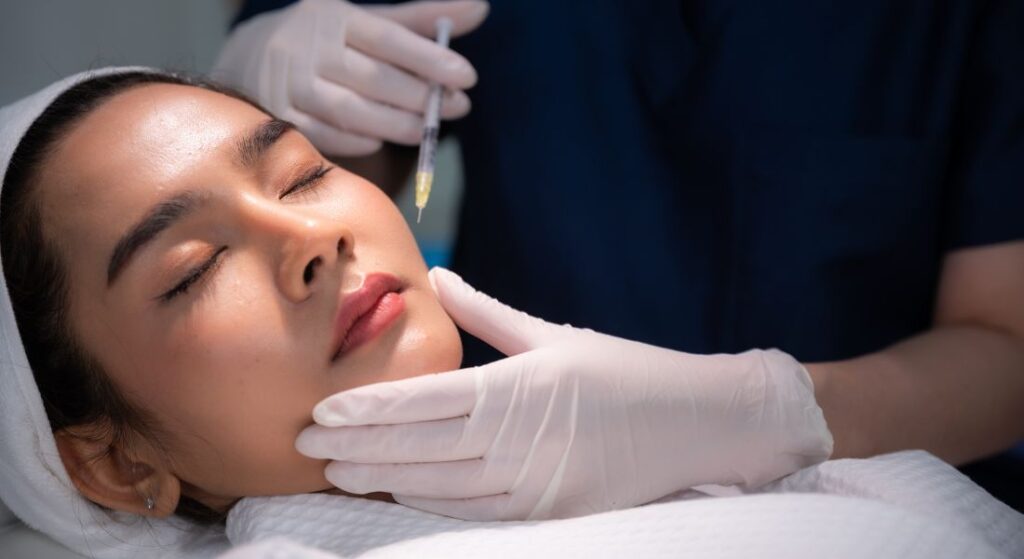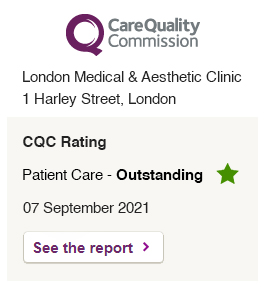
If you’ve been researching facial rejuvenation treatments, you’ve probably come across Sculptra, a collagen-stimulating injectable that’s making waves in aesthetic medicine. But with higher prices compared to traditional fillers, it’s natural to wonder is Sculptra really worth the money?
It’s an important question because the world of injectables can be confusing. Between marketing buzzwords and social media hype, it’s hard to know whether a treatment truly delivers value or just temporary glamour.
In this article, we’ll take an honest, expert-backed look at how Sculptra works, what it costs, how long results last, and whether it’s genuinely worth investing in for long-term beauty and skin health.
What Exactly Is Sculptra?
Sculptra is not your typical filler. Instead of simply adding instant volume under the skin, it works by stimulating your body’s own collagen production.
The main ingredient poly-L-lactic acid (PLLA) is a biocompatible substance used in medical treatments for decades. When injected into the skin, it triggers a natural healing response, encouraging your body to rebuild its internal structure from within.
The result? A gradual, natural-looking rejuvenation that enhances firmness, smoothness, and facial contour over time.
How Sculptra Differs from Traditional Fillers
If you’ve ever had (or considered) hyaluronic acid fillers like Juvederm or Restylane, you might be wondering how Sculptra compares. The biggest difference lies in how each treatment works and what kind of results you’re looking for.
Sculptra uses poly-L-lactic acid, a collagen stimulator that helps your skin rebuild its own structure over time. Instead of simply filling out lines or adding instant plumpness, it works with your body to gradually restore volume from within. You’ll start to see subtle changes develop over the course of about three to six months as new collagen forms.
Hyaluronic acid (HA) fillers, on the other hand, are made from a gel-like substance that delivers immediate results. They’re fantastic if you want to add quick volume to specific areas like your lips, cheeks, or under-eyes. But because they don’t tackle the root cause of ageing (collagen loss), their effects usually fade within six to twelve months.
Sculptra takes longer to show, but its results can last up to two years or even more. While it tends to cost more upfront, you’ll likely find it’s a smarter long-term investment if your goal is overall rejuvenation and natural contouring rather than a short-lived fix.
The Real Cost of Sculptra

Pricing varies between clinics, but here’s what you can typically expect:
– Cost per vial: £400–£800 depending on location and practitioner expertise.
– Number of vials per session: 1–3, depending on treatment area and goals.
– Average total treatment plan: £1,200–£2,500 for a full facial rejuvenation course.
While this may sound like a substantial investment, remember that Sculptra’s results last much longer than regular fillers often two years or more, which makes the overall cost more comparable over time.
If you were to repeat traditional fillers every 8–10 months, you might spend a similar or higher amount in the same timeframe.
The Long-Term Value of Sculptra
The real beauty of Sculptra lies in its longevity and skin-health benefits.
Because it builds collagen, it doesn’t just add volume it improves your skin’s quality from within. Over months, you’ll notice:
– Firmer, more elastic skin
– Smoother texture
– Better facial contouring
– Reduced hollowness around the cheeks and temples
Even after the initial product dissolves, your body’s new collagen continues to support the skin for years.
So while you pay more upfront, the return on investment comes in the form of long-lasting rejuvenation and fewer top-up appointments.
Who Benefits Most from Sculptra
Sculptra isn’t for everyone and that’s part of what makes it valuable when used correctly.
It’s ideal for:
– People experiencing gradual volume loss or hollowing in the cheeks or temples.
– Those seeking natural, subtle results without the “overfilled” look.
– Individuals wanting long-term collagen stimulation.
– People in their late 30s and beyond who want to address early signs of facial ageing.
If you want immediate plumping for example, fuller lips before an event Sculptra may not be the best fit. But if you’re playing the long game for a natural, age-defying glow, it’s one of the best options available.
How Many Sessions Do You Need?

Unlike fillers that provide instant results in one appointment, Sculptra usually requires a course of treatments spaced a few weeks apart.
Most people need 2–3 sessions to achieve optimal results, with each session stimulating more collagen. The process is cumulative, meaning your results improve progressively.
Once the desired effect is achieved, maintenance is minimal typically a top-up every 18–24 months.
What Makes Sculptra Feel “Worth It”
Here’s where patients and many celebrities find Sculptra truly worth the price:
1. It’s You, Just Better
There’s no sudden change or “pillow face” effect. Sculptra enhances your existing features naturally, preserving facial balance and expression.
2. It Reverses the Root Cause of Ageing
By stimulating collagen, Sculptra doesn’t just mask the signs of ageing it helps slow them down.
3. It’s a Long-Term Investment
You’re not just paying for volume you’re paying for your skin’s health to improve over time.
4. It’s Customisable
Each treatment is tailored to your face, age, and collagen needs. A skilled practitioner can target precise areas for balanced rejuvenation.
The Science Behind the Results
Collagen makes up roughly 70% of your skin’s structure, giving it firmness and elasticity. Starting in your mid-20s, collagen production decreases by about 1% per year.
By your 40s, that loss becomes noticeable as sagging, fine lines, and hollowness.
Sculptra’s poly-L-lactic acid particles act as tiny collagen factories, triggering fibroblasts to rebuild the matrix beneath your skin.
The result is not a filler effect, but a gradual thickening and tightening of the dermis something no moisturiser or surface treatment can replicate.
Comparing Sculptra to Other Treatments

If you’ve been looking into different ways to refresh your skin, you’ve probably noticed there are quite a few options out there from fillers to collagen-boosting injectables and even laser treatments. Here’s how Sculptra stacks up against some of the most popular choices.
Sculptra gives you results that can last up to two years, thanks to its unique ability to stimulate collagen and create a natural contour. It usually costs between £1,200 and £2,500, making it ideal if you’re after overall facial rejuvenation rather than a quick plumping effect.
Hyaluronic acid fillers, such as Juvederm or Restylane, deliver instant volume and plumpness, especially for targeted areas like the lips, cheeks, or under-eyes. The results typically last six to twelve months, and prices range from £300 to £800.
Then there’s Profhilo, a hyaluronic acid–based injectable designed to boost hydration and improve skin elasticity. It’s great for treating fine lines and uneven texture, and results usually last around six to nine months, with treatments costing £500 to £800.
Microneedling is another option if you want a surface-level collagen boost. It can smooth out texture and refine pores, though the effects are more subtle and generally last for around six months. You can expect to pay £250 to £600 per session.
Lastly, laser resurfacing focuses on skin tightening and correcting sun damage or wrinkles. It’s a more intensive treatment, but the results can last a year or more, with prices ranging from £800 to £2,000, depending on the laser type and area treated.
When you compare them side by side, you’ll notice that Sculptra really stands out for its longevity and structural lift. It’s not the treatment for you if you want instant gratification, but if you’re after a gradual, natural-looking transformation, it’s hard to beat.
Is Sculptra More Expensive Because It’s Better?
Not necessarily. The higher price reflects several factors:
Advanced formulation: The collagen-stimulating technology is more complex than standard fillers.
Expertise required: Practitioners must have specific training to inject Sculptra safely and evenly.
Long-lasting effects: The results outlast most other injectables, reducing the need for frequent touch-ups.
Think of it like skincare: you can buy a budget product that works short-term or invest in a premium one that transforms your skin over time. Sculptra is that long-term investment.
How It Feels and Recovers
Sculptra treatments are typically comfortable, thanks to local anaesthetic mixed with the injection solution.
After your session, you might experience mild swelling, redness, or tenderness these usually subside within a few days.
The most important aftercare rule is the “rule of 5s”:
Massage the treated area for 5 minutes, 5 times a day, for 5 days.
This helps the product distribute evenly and promotes smoother collagen development.
Patient Satisfaction and Reviews
Across clinical studies and patient testimonials, satisfaction with Sculptra tends to be extremely high.
Most people describe their results as “natural but noticeable” a fresher, firmer version of themselves.
In a 2019 survey published in Aesthetic Surgery Journal, over 90% of patients reported visible improvement in skin quality and contour within 6 months of treatment. Many said they felt more confident because the changes didn’t look artificial.
When Sculptra Might Not Be Worth It
Although it’s an excellent treatment, Sculptra isn’t for everyone. It might not be ideal if you:
– Want immediate, visible results.
– Have very thin skin or minimal facial fat.
– Aren’t willing to commit to multiple sessions.
– Are looking for enhancement in areas like lips or tear troughs (where traditional fillers work better).
A thorough consultation with an experienced practitioner will help determine whether it suits your goals.
Sculptra vs the “Quick Fix” Mentality
We live in a world of instant gratification from filters to one-day makeovers. But when it comes to ageing gracefully, the best results often take time.
Sculptra embodies this philosophy. It doesn’t promise overnight transformation, but it delivers lasting, authentic rejuvenation that feels like your skin has simply aged in reverse.
It’s not just about looking younger it’s about restoring your confidence through your body’s own regenerative power.
Why Expertise Matters
Because Sculptra works gradually and interacts with your body’s natural biology, the skill of your injector matters immensely.
A qualified professional such as a certified aesthetic doctor at LMA Clinic understands facial anatomy, dilution ratios, and injection depth. This ensures smooth, balanced collagen stimulation without lumps or unevenness.
Choosing an expert also maximises your investment. When performed correctly, Sculptra can give long-term, natural-looking rejuvenation with minimal risk and downtime.
Sculptra as a Part of a Long-Term Plan
Many patients combine Sculptra with complementary treatments for holistic rejuvenation. For example:
– Botox or anti-wrinkle injections for dynamic lines.
– Laser treatments for texture and pigmentation.
– Hydrating injectables like Profhilo for glow and elasticity.
Used together, these treatments create balance addressing structure, texture, and tone for comprehensive skin renewal.
Financial Perspective: Cost vs Benefit
When you calculate the cost of maintaining short-term fillers over two years versus investing in Sculptra, the financial gap narrows considerably.
For example:
Traditional fillers: £500 × 3 top-ups = £1,500+ annually
Sculptra: £1,800 total lasting up to 24 months
Over time, Sculptra often saves money, especially for those seeking full-face rejuvenation.
Sustainability and Skin Longevity
Another underrated benefit of Sculptra is its bio-stimulating nature. By encouraging your skin to work harder, it promotes sustainable beauty a concept growing in popularity among both patients and practitioners.
Instead of relying solely on synthetic volume, you’re boosting your skin’s own resilience and health, which aligns with modern preferences for “inside-out” aesthetics.
FAQs:
1. How long does it take to see results from Sculptra?
You won’t walk out of your first Sculptra session looking dramatically different and that’s part of its beauty. Unlike hyaluronic acid fillers that provide immediate plumpness, Sculptra works gradually by stimulating your body’s collagen production. Most people start to notice subtle improvements around six to eight weeks after the first treatment. These changes continue to build over time, with optimal results typically visible after the second or third session. By the three- to six-month mark, you’ll usually see firmer, more youthful-looking skin that appears naturally refreshed rather than “done.”
2. How long do Sculptra results really last?
The longevity of Sculptra is one of the reasons many patients consider it worth the investment. Once your body has generated new collagen, the results can last up to two years sometimes even longer with proper skincare and maintenance. Unlike temporary fillers that dissolve within months, the collagen your body produces remains even after the Sculptra particles themselves have been absorbed. This makes the overall effect more sustainable, giving you smoother, firmer, and more lifted skin that lasts well beyond your last treatment session.
3. How many treatments will you need for best results?
Most people need a course of two to three Sculptra sessions, spaced about four to six weeks apart. The exact number depends on your age, collagen levels, and the amount of volume you’d like to restore. During your consultation, your practitioner will assess your skin and create a tailored plan. Because collagen takes time to rebuild, each session builds upon the last giving you progressive, cumulative improvement. After your initial course, a single maintenance session every 18 to 24 months is often enough to sustain the results.
4. Is Sculptra painful or uncomfortable?
You’ll be glad to know that Sculptra is usually very well tolerated. The injection solution is mixed with a local anaesthetic, which helps minimise discomfort during treatment. Most people describe the feeling as mild pressure or pinching rather than pain. After the procedure, you might notice some tenderness, redness, or slight swelling, but these effects are temporary and tend to settle within a few days. Following the aftercare especially the five-day massage rule helps ensure comfort and smooth, even results.
5. What’s recovery like after a Sculptra treatment?
Recovery from Sculptra is typically quick and straightforward. You can usually return to your normal routine almost immediately. Some mild swelling or redness may appear in the treated areas, but these signs usually fade within 24 to 48 hours. The key part of aftercare is the “rule of 5s” massaging the treated area for five minutes, five times a day, for five days. This helps distribute the product evenly and promotes optimal collagen stimulation. It’s also recommended that you avoid intense exercise, saunas, and alcohol for the first 24 hours to help your skin heal properly.
6. How safe is Sculptra?
Sculptra has an excellent safety profile and has been used in medical treatments for decades. The main ingredient, poly-L-lactic acid, is biocompatible and biodegradable meaning your body can safely absorb it over time. When administered by a qualified and experienced aesthetic professional, the risk of complications is very low. Rare side effects can include small nodules under the skin, but these are usually avoided with proper injection technique and post-treatment massage. Choosing a trained injector who understands facial anatomy is key to achieving smooth, natural results.
7. Can Sculptra be combined with other treatments?
Yes, and in fact, it often works beautifully as part of a holistic rejuvenation plan. Because Sculptra rebuilds structure and collagen from within, it complements other aesthetic treatments that target different concerns. You can combine it with anti-wrinkle injections like Botox to smooth expression lines, or with laser treatments to improve texture and pigmentation. Hydrating injectables such as Profhilo also pair well, adding luminosity and elasticity while Sculptra takes care of deeper support. Your practitioner will usually space these treatments appropriately to ensure your skin gets the best of both worlds without irritation.
8. Who is a good candidate for Sculptra?
Sculptra tends to work best for people who are noticing gradual facial volume loss, sagging, or thinning skin often in their late 30s and beyond. It’s ideal if you want natural-looking rejuvenation without dramatic changes or the tell-tale “filled” appearance. You’ll benefit most if you’re patient and willing to wait for your results to develop, since Sculptra focuses on long-term improvement rather than quick fixes. However, it may not be suitable if you’re very lean-faced, have certain autoimmune conditions, or want immediate enhancement in specific areas like the lips. A consultation is the best way to determine if it’s right for you.
9. Why does Sculptra cost more than other fillers?
The price of Sculptra reflects several important factors. Its formulation is more advanced, designed not just to add temporary volume but to trigger your skin’s own collagen production. This makes it a more technically complex treatment that requires precise injection skills and specific training. Additionally, its longevity lasting up to two years or longer means you’ll need fewer appointments over time. When you compare the cost per year, Sculptra often works out to be similar, or even more cost-effective, than repeating shorter-term fillers. Essentially, you’re paying for a treatment that improves your skin’s structure, not just its appearance.
10. Is Sculptra really worth the money?
If you’re looking for quick, event-ready volume, you might find traditional fillers more immediately satisfying. But if your goal is to rejuvenate your face in a way that looks and feels entirely natural and lasts Sculptra is absolutely worth considering. It offers a unique return on investment because it doesn’t just fill lines; it rebuilds your skin’s foundation by boosting collagen. Over time, you’ll notice your face appearing subtly lifted, smoother, and more refreshed like your best self, just a few years younger. The combination of longevity, natural results, and improved skin health makes Sculptra one of the most rewarding choices in aesthetic medicine today.
Final Thoughts: Is Sculptra Truly Worth the Investment?
When you think about aesthetic treatments that deliver both immediate confidence and long-term benefits, Sculptra stands apart. It’s not about chasing temporary volume it’s about rebuilding the foundation of your skin from within. The process may take patience, but the reward is worth it: firmer, smoother, and naturally rejuvenated skin that continues to improve over time.
While Sculptra’s upfront cost is higher than many traditional fillers, its longevity, subtlety, and collagen-boosting effects make it a smart investment in your skin’s health. For those who value natural beauty and sustainable results, it offers something few treatments can genuine skin renewal that looks like you’ve simply aged gracefully. If you’re considering Sculptra treatments, you can get in touch with us at the London Medical & Aesthetic Clinic. Our experienced specialists will guide you through every step, helping you achieve a refreshed, natural-looking appearance that lasts.
References:
1. Christen, M.-O. (2022) ‘Collagen stimulators in body applications: A review focused on poly-L-lactic acid (PLLA)’, Clinical, Cosmetic and Investigational Dermatology, 15, pp. 997-1019. Available at: https://pubmed.ncbi.nlm.nih.gov/35761856/
2. Vleggaar, D. (2006) ‘Soft-tissue augmentation and the role of poly-L-lactic acid’, Plastic and Reconstructive Surgery, 118(3 Suppl), pp. 46S-54S. Available at: https://pubmed.ncbi.nlm.nih.gov/16936544/
3. Signori, R., Barbosa, A. d. P., Cezar-dos-Santos, F., Carbone, A. C., Ventura, S., Nobre, B. B. d. S., Neves, M. L. B. B., Câmara-Souza, M. B., Poluha, R. L. & De la Torre Canales, G. (2024) ‘Efficacy and Safety of Poly-l-Lactic Acid in Facial Aesthetics: A Systematic Review’, Polymers, 16(18), article 2564. Available at: https://www.mdpi.com/2073-4360/16/18/2564
4. Avelar, L. et al. (2024) ‘Unveiling the Mechanism: Injectable Poly‐L‐Lactic Acid’s role in facial and body aesthetic treatments’, Facial Plast Surg Clin North Am, PMCID: PMC11743305. Available at: https://www.ncbi.nlm.nih.gov/pmc/articles/PMC11743305/
5. Ouyang, R. (2025) ‘Advances in Poly-L-Lactic Acid Injections for Facial and Non-Facial Applications’, Facial Plast Surg Clin, PMCID: PMC12323926. Available at: https://www.ncbi.nlm.nih.gov/pmc/articles/PMC12323926/





